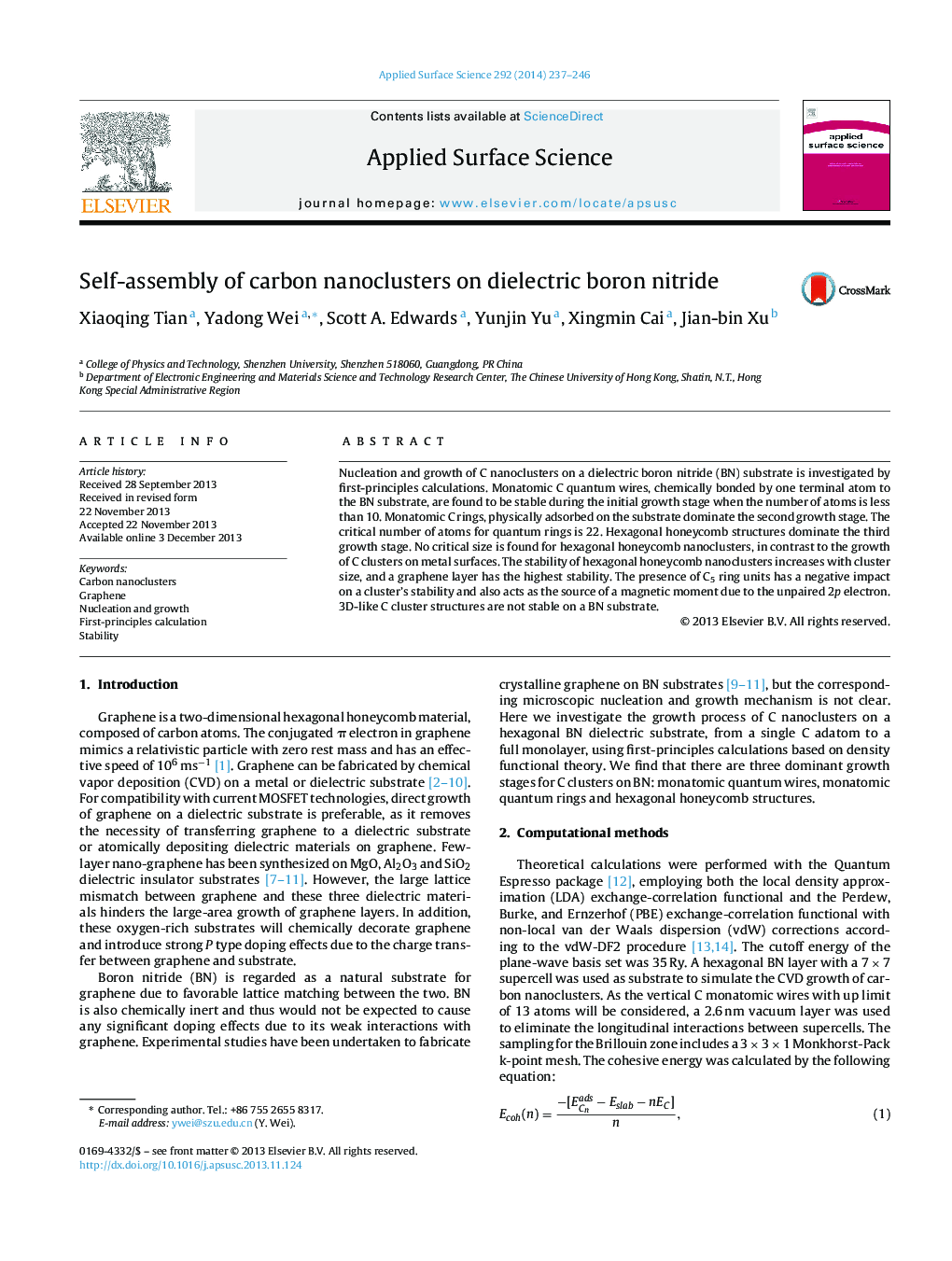| Article ID | Journal | Published Year | Pages | File Type |
|---|---|---|---|---|
| 5353345 | Applied Surface Science | 2014 | 10 Pages |
Abstract
Nucleation and growth of C nanoclusters on a dielectric boron nitride (BN) substrate is investigated by first-principles calculations. Monatomic C quantum wires, chemically bonded by one terminal atom to the BN substrate, are found to be stable during the initial growth stage when the number of atoms is less than 10. Monatomic C rings, physically adsorbed on the substrate dominate the second growth stage. The critical number of atoms for quantum rings is 22. Hexagonal honeycomb structures dominate the third growth stage. No critical size is found for hexagonal honeycomb nanoclusters, in contrast to the growth of C clusters on metal surfaces. The stability of hexagonal honeycomb nanoclusters increases with cluster size, and a graphene layer has the highest stability. The presence of C5 ring units has a negative impact on a cluster's stability and also acts as the source of a magnetic moment due to the unpaired 2p electron. 3D-like C cluster structures are not stable on a BN substrate.
Related Topics
Physical Sciences and Engineering
Chemistry
Physical and Theoretical Chemistry
Authors
Xiaoqing Tian, Yadong Wei, Scott A. Edwards, Yunjin Yu, Xingmin Cai, Jian-bin Xu,
